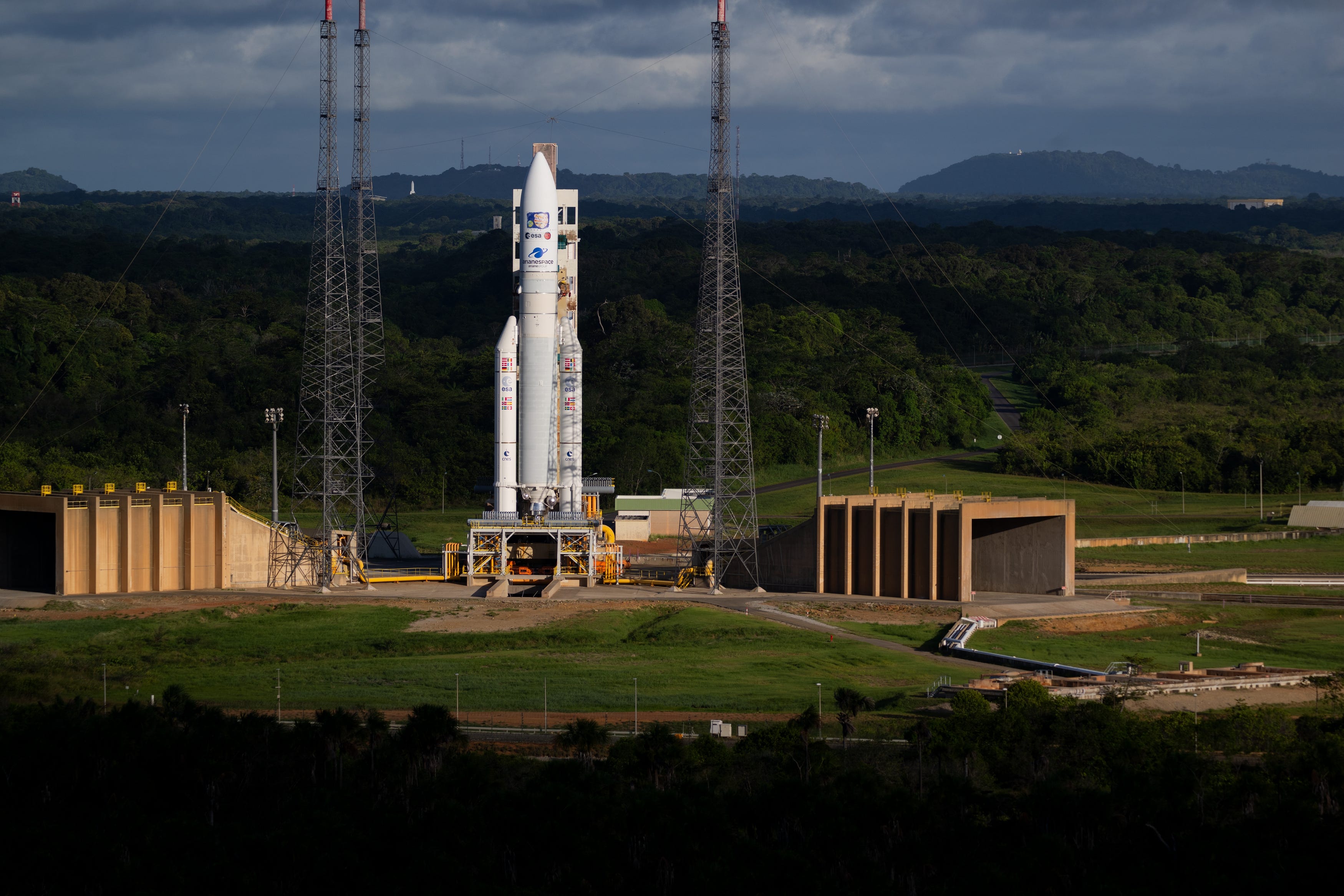UK scientists ‘excited’ about playing key roles in ESA’s Jupiter mission
Experts in the UK have led the development of the spacecraft’s magnetometer.

Your support helps us to tell the story
From reproductive rights to climate change to Big Tech, The Independent is on the ground when the story is developing. Whether it's investigating the financials of Elon Musk's pro-Trump PAC or producing our latest documentary, 'The A Word', which shines a light on the American women fighting for reproductive rights, we know how important it is to parse out the facts from the messaging.
At such a critical moment in US history, we need reporters on the ground. Your donation allows us to keep sending journalists to speak to both sides of the story.
The Independent is trusted by Americans across the entire political spectrum. And unlike many other quality news outlets, we choose not to lock Americans out of our reporting and analysis with paywalls. We believe quality journalism should be available to everyone, paid for by those who can afford it.
Your support makes all the difference.Scientists in the UK have spoken of their excitement about playing key roles in the European Space Agency’s (ESA) mission to launch a spacecraft to Jupiter.
Juice, which stands for Jupiter Icy Moons Explorer, is due to blast off on Thursday from French Guiana, with an eight-year journey ahead.
Its mission is to find out if any of the planet’s three ocean-bearing moons – Ganymede, Europa and Callisto – are habitable.
Professor Geraint Jones, of University College London’s (UCL) Mullard Space Science Laboratory (MSSL), who is a co-investigator on one of Juice’s 10 scientific instruments, said: “We are excited that the mission will shed new light on worlds that could potentially host life.”
Scientists from Imperial College London led the development of the magnetometer, known as J-MAG, while the UK Space Agency provided £9 million of funding for the £1.4 billion project.
J-MAG will measure the characteristics of the magnetic fields of Jupiter and its largest moon, Ganymede.
It will also play a key role in detecting moving salts in the oceans beneath the icy crusts of Ganymede, and see if it may hold the conditions for life.
Professor Michele Dougherty, head of the Department of Physics at Imperial College London and principal investigator for J-MAG, said: “With our instrument’s measurements, we are almost looking inside these worlds.
“What we’re doing however is extremely difficult, as the signals we’re trying to detect are extremely small.”
She added: “But we think the results are going to be spectacular.”
Prof Dougherty and her team will be collaborating with experts from the University of Leicester as well as UCL.
Professor Emma Bunce, director of the Institute for Space at the University of Leicester and co-investigator on J-MAG, said: “After many years of hard work from science, engineering and industry teams, we are so excited that the Juice mission is finally ready to launch and start its long journey to the Jupiter system.”
As well as J-MAG, Leicester’s scientists will also collaborate with other experts on two other instruments on Juice: MAJIS (the Moons and Jupiter Imaging Spectrometer) – which will observe cloud features and atmospheric constituents on Jupiter; and UVS (UV imaging spectrograph) – which will characterise the composition and dynamics of the exospheres of the icy moons.
Meanwhile, the MSSL has provided particle detectors for Juice’s PEP (Particle Environment Package) instrument, which will gather data on the atoms surrounding Jupiter and its moons.
Prof Jones, a co-investigator on the PEP instrument, said: “This data will help us, for instance, to understand how particles around Jupiter reach such high energies – energies that could be fatal for an astronaut.”
The MSSL, along with the Open University, also has science roles in Juice’s optical camera system called Janus.
Dr Chiaki Crews, research fellow at the Open University, said: “The Juice mission aims to answer many exciting questions, including whether the ocean worlds beneath the surfaces of Jupiter’s icy moons could potentially harbour life.
“One of the many instruments needed to make detailed scientific observations to help answer such questions is a camera.
“A large part of our work was to irradiate test sensors with high doses of radiation, just like it is expected to experience during the Juice mission lifetime, to check that Janus will still be able to take images without too much degradation.”
Commenting on the launch, British astronaut Tim Peake said: “This is such an exciting mission, with the power to inspire the next generation of scientists and explorers.
“What could be more inspirational than the search for extraterrestrial life?
“Personally, I’m convinced that there is life out there, somewhere.
“We have already identified 50 billion stars likely to have planets with a habitable zone in this galaxy alone.
“If you consider that there could be as many as 200 billion galaxies in the observable universe, the chance of Earth being the only planet supporting life is extremely slim in my view.
“The Juice launch is an important step in trying to unlock the hidden mysteries of the universe.”